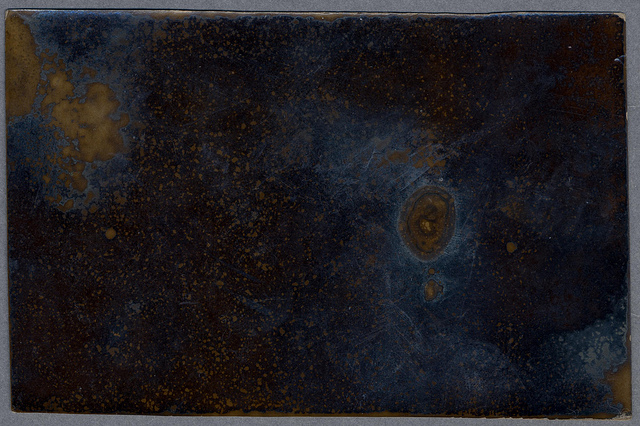THEATER HERSTORY – WINTER 2020
(from January 14-March 3, 2020)
A course focusing on historically significant plays written by women in the 20th century, as a way to study all centuries of theater history. This is a separate course — taking the Fall Theater History is not a requirement.
TEXTS TO READ FOR CLASS
Listen to Me by Gertrude Stein / Machinal by Sophie Treadwell / Trifles by Susan Glaspell / The Purple Flower by Marita Bonner / Happy End by
Kurt Weill, Elisabeth Hauptmann, and Bertolt Brecht / The Women by
Clare Booth Luce / Cloud Nine by Caryl Churchill / Funnyhouse of a
Negro by Adrienne Kennedy
THEATER HISTORY – AUTUMN 2019
Abraham and Isaac by an anonymous author / Ubu Roi by Alfred Jarry / Miss Julie by Strindberg / Henry VI, part 2 by Shakespeare / Our Town by Thornton Wilder / A Month in the Country by Turgenev / A Funny-Thing-Happened-on-the-Way-to-the-Forum by Stephen Sondheim, Burt Shevelove, and Larry Gelbart / Sweeney Todd by Stephen Sondheim and Hugh Wheeler
The course offers ideas and practical skills for the actor who wants
to be a theater artist today, suggesting ways to create their own vision of theater-making now, informed by, and in the context of, theater history. This class explores what theater artists have done before and what we, inspired by history, might do now and do next.
Abraham and Isaac by an anonymous author
https://wwnorton.com/college/english/nael/noa/pdf/13BromePlay_1_12.pdf
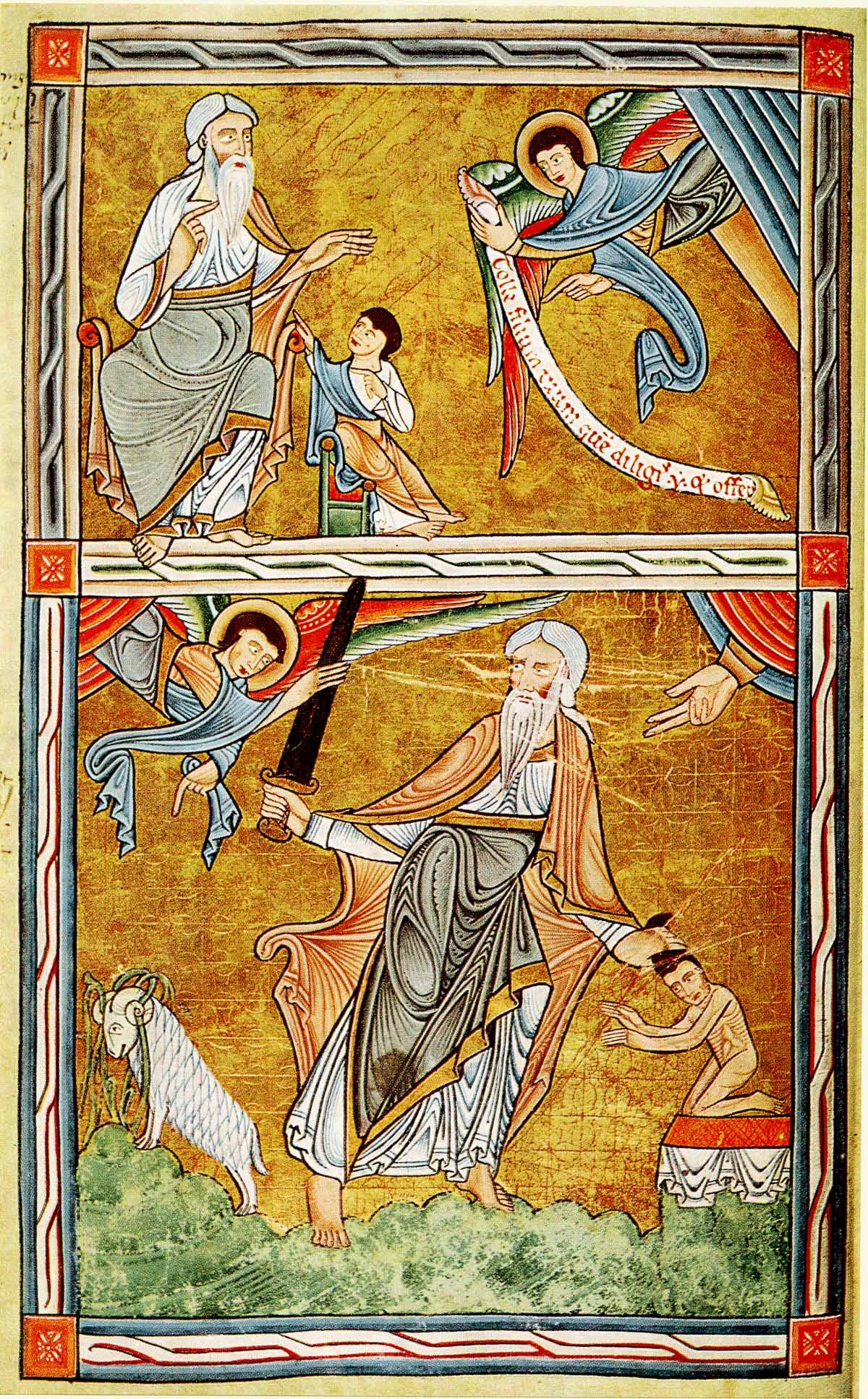
Everyman by an anonymous author
http://geeks.astorialand.com/scripts/everyman.pdf
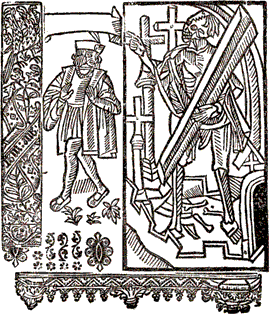
It’s important to remember that history is not what happened. History is what was recorded and how we interpret what we find as evidence of the past. When we speak of the Medieval mind, we are drawing inferences from what physically survives from a time long ago, five hundred to fifteen hundred years in the past: paintings, woodcuts, music, architecture, writing, bits of ivory, pieces of stone, embroidery, indentations in the dirt, and scraps of sheepskin. That these relics survive is the power of fate and, often, the power of politics and wealth.
Some scholars call four lines, the Quem Quaeritis, which mean “Who are you looking for?” the first theatre in Western Europe. This was when priests or altar boys impersonated the Three Marys: Mary the mother of Jesus, Mary Magdalene and Mary the mother of Martha and Lazarus —the last Mary unimportant to be sure, out of the B list of Biblical characters, but you can see how much the audience enjoyed threes. Certain modern scholars include the Priest and come up with Four Marys, but we know from the dialog the fourth priest spoke the words of the Angel at the Tomb.
The Three Marys stood up in the aisle, perhaps in drag. “Who are you looking for?” the angel (presumably not in drag) asked? “For Jesus,” the three Marys say, chant or sing. “He’s not here, he’s gone up to Heaven. Go and tell people.” This was all in Latin as was the Mass, but it was an addition to the Mass, and so called a trope: not unlike a little jazz riff. One imagines their words done, the three Marys moved down the aisle enacting the spread of the gospel. If you think the Quem Quaeritis counts as theater, I don’t. It seems more to me like a knock-knock joke, but if we stretch we can sniff in the use of dialog and impersonation and symbolic actions like walking down the aisle (and men or boys dressed in women’s clothing) the start of something.
THEATER OF THE “MIDDLE AGES” : 500 AD to 1500 AD
[In AD 476 warriors attacked the city of Rome and ended the Roman Empire. The period between then and the start of the Renaissance in Italy around 1450 is known as the Middle Ages. ]
We have only to listen to their music, to understand what the function of their art was to smother, to overwhelm, to envelope, to lift spirits high, to leave the gross material world behind, their singing voices an accumulation of sameness where the individual is bent to praise god and obey orders.
If they could see with our eyes and hear with our ears, they’d probably complain that our senses are dulled. If they could look into our hearts, they would be startled at our lack of spiritual life, as they would understand the life of the spirit.
We study them not as cul de sacs of experience, but as a mode of being human, and a mode that will always rise, the same as a fart. Their way of thinking, we now know, repeats itself.
ABOUT THE MIDDLE AGES
“In the Middle Ages both sides of human consciousness–that which was turned within as that which was turned without– lay dreaming or half awake beneath a common veil. The veil was woven of faith, illusion, and childish prepossession, through which the world and history were seen clad in strange hues. Man was conscious of himself only as a member of a race, people, party, family, or corporation–only through some general category. ”
Jakob Burckhardt “The Civilization of the Renaissance in Italy” 1860
“Theirs was no faith of abstractions and generalities. For them, heaven was very near to earth, touching and mingling with it at many points. On high, God the Father sat enthroned; and, nearer to human sympathies, Divinity incarnate in the Son, with the benign form of his immaculate mother, and her spouse, St. Joseph …. Interceding saints and departed friends bore to the throne of grace the petitions of those yet lingering in mortal bondage, and formed an ascending chain from earth to heaven.”
Francis Parkman, “The Jesuits in North America” 1867
“The Middle Ages never forgot that all things would be absurd, if their meaning were exhausted in their function and their place in the phenomenal world, if by their essence they did not reach into a world beyond this. This idea of a deeper significance in ordinary things is familiar to us as well, independently of religious convictions: as an indefinite feeling which may be called up at any moment, by the sound of raindrops on the leaves or by the lamplight on a table. Such sensations may take the form of a morbid oppression, so that all things seem to be charged with a menace or a riddle which we must solve at any cost. Or they may be experienced as a source of tranquility and assurance, by filling us with the sense that our own life, too, is involved in this hidden meaning of the world. The more this perception converges upon the absolute One, whence all things emanate, the sooner it will tend to pass from the insight of a lucid moment to a permanent and formulated conviction. ‘By cultivating the continuous sense of our connection with the power that made things as they are, we are tempered more towardly for their reception. The outward face of nature need not alter, but the expressions of meaning in it alter. It was dead and is alive again. It is like the difference between looking on a person without love, or upon the same person with love … When we see all things in God, and refer all things to Him, we read in common matters superior expressions of meaning.’”
– J. Huizinga, The Waning of the Middle Ages, 1919
– (quoting William James, Varieties of Religious Experience) 1902
OH AND…
Mystery plays: The word probably relates to the old Latin word for trade or guild, or occupation. It might relate to the Latin word meaning: to do, to act, which would put it in a line with more recent thinking about theater and performance, but that seems to me to be wishful thinking. As “mystery” plays they might be called in English equivalent, the guild plays, the union plays. What the mysteries do is enact the stories from the Bible.
Miracle plays:The miracle plays are the stories of the saints. Along with relics, the saints left behind their inspirational life-stories. The miracle plays dramatize moments when the miracle of the saint is revealed. Performing a miracle play turns the audience into witnesses of miracles, in the role of Christ’s disciples. Through an accident of fate, the earliest example of a medieval play we have is a miracle play, and odder still, we know the author: the Saxon nun named Hroswitha (though there’s indication her real name was Helena). Her dates are roughly 915-940. Obviously educated and with some freedom of thought, she copied the form of the Roman playwright Terence, whose plays she found in the convent library. There is no record of the plays being performed at the time they were written.
Morality plays: They have a moral: a lesson of how to live one’s life. They’re acted-out parables or sermons, with actors taking the part of personified ideas: Faith, Good Deeds, Family, Everyman. The play called Everyman is the most famous in English, though it now seems to be a translation from Dutch. Everyone forsakes Everyman: family, friends, wealth, beauty, everything but good deeds and knowledge. The story is an example of the medieval habit of using art to see the abstract rather than the specific. The character named Family is not anyone’s mother or even third cousin, but simply the concept “Family.” This is what’s called an allegory. It’s interesting to look at the root of that word, too. It’s Greek, from the agora , the market place, itself derived from an earlier word that means herd and by extension crowd. Allegory: what one says to the crowd or herd.
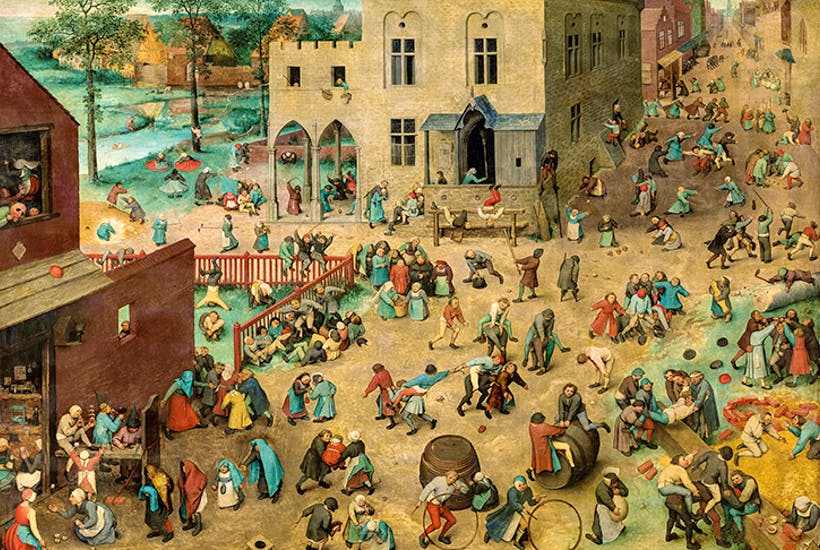
VISIT: https://commons.wikimedia.org/wiki/Pieter_Bruegel_(I)#/media/File:Le_combat_de_Carnaval_et_de_Carême_Pieter_Brueghel_l’Ancien.jpg
WEEK TWO: AUDIENCE OF DOUBT
Ubu Roi by Jarry, Peer Gynt by Ibsen, Baal by Brecht Baal in the attic with girls)
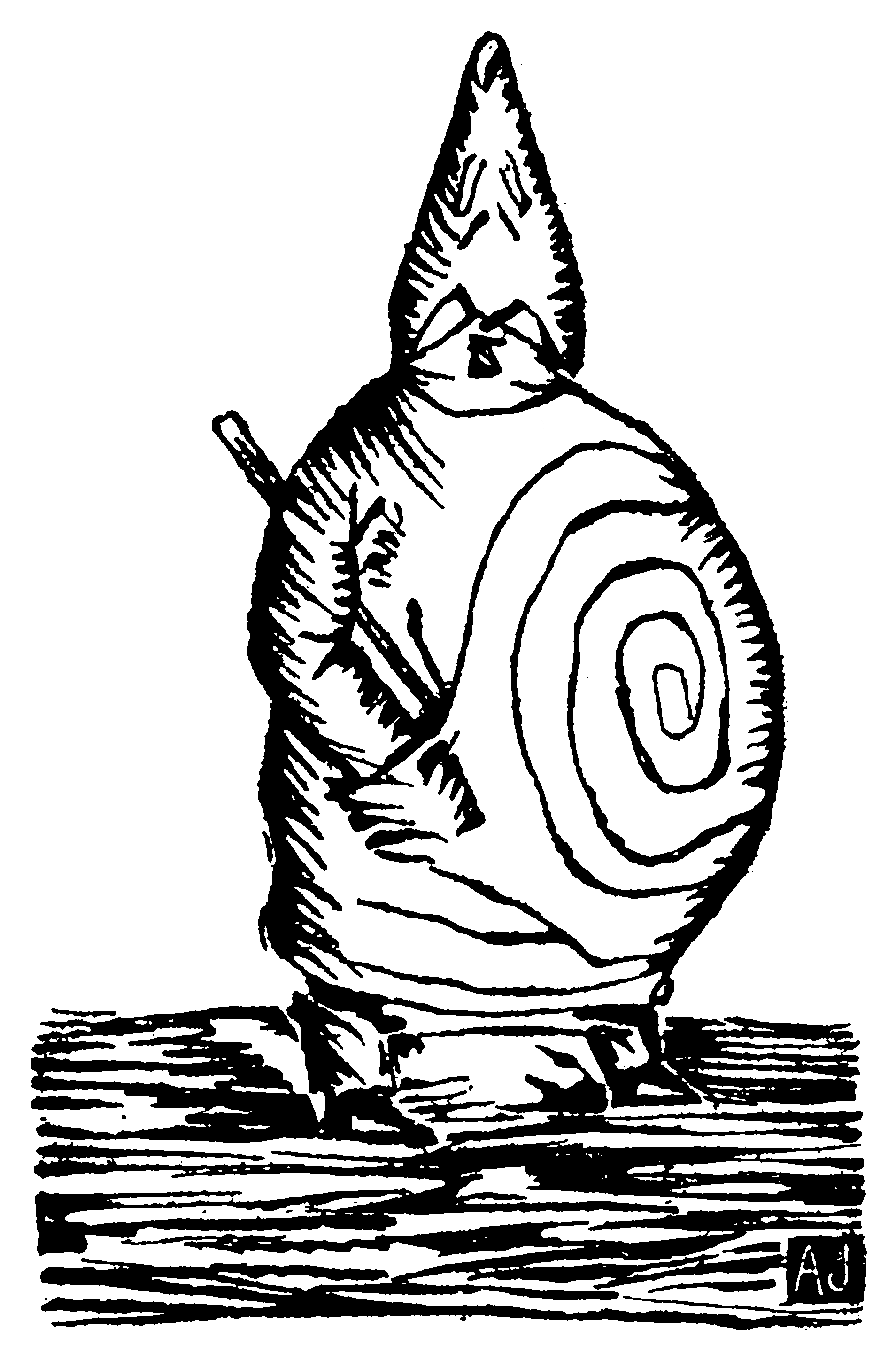 Portrait of Ubu by his creator, Alfred Jarry
Portrait of Ubu by his creator, Alfred Jarry
This is real life! With all its lows and highs,
To hell with all those wishy-washy lies.
–from Peer Gynt by Henrik Ibsen[i]
Ubu: I’ve changed the government and run an advertisement in the paper that says you have to pay all present taxes twice and all those I’ll levy later on three times. With this system I’ll make my fortune quickly; then I’ll kill everyone and run away.
1918
Baal: I’ll have a go at the inner man. I’m hollowed out, but hungry as a vulture. Nothing but a bag of bones. The bitch! [He leans back and stretches his arms and legs with emphasis.] I’ll make summer. Red. Scarlet red. Greedy. [He hums again.]
–from Baal by Bertolt Brecht[iii]
[i] Translated from the Norwegian by Irene B. Berman and Gerry Bamman
[ii] Translated from the French by Michael Benedikt and George E. Wellwarth
[iii] Translated from the German by Peter Tegel[iii]
Each of these three plays written in different languages—Norwegian, French, and German—is named after a bad boy who takes the stage thumbing, if not picking, his nose at the rules of order, including the rules set out by the expectations of the audience.
The dogmas of good taste, the doctrines of good theater, and the drivel of useful morality are not just ignored but ridiculed in these three funny plays. Modern drama began with the relief of being freed from authority without the responsibility of setting up any other authority. Later playwrights developed modern drama by dramatizing the itch to break rules with plays shadowed by anxiety over what would happen in a world without rules.
The earliest modern playwrights found inspiration in sources outside of classical Greece and Rome. Ibsen spun plays out of Norwegian folktales and Viking sagas; Büchner dramatized real-life events in France and Germany. Jarry and Brecht found early inspiration in various sources including the Bible and Shakespeare. What other people found “wrong” about Shakespeare—the lack of unities, the mix of farce and tragedy in the same work—were just the aspects these writers found worth emulating.
There is a direct relationship between Peer Gynt, Ubu Roi, and Baal and medieval performances—story-telling combined with enactment and the medieval theater’s broad characterizations, body humor, vulgar speech, and farcical ways to deliver memorable spiritual content. Isn’t it interesting that the propaganda techniques from the Age of Faith were used by those who meant to mock faith in systems?
After the First World War, the idea of modernity carried with it despair—often chalked up to the death of God. Pleasure in earliest Modern drama is the same as when Ibsen crossed the Alps and saw the sun coming out over Italy. The spirit that lives in these three plays is willfully irresponsible. The pleasures enjoyed by the title characters won’t be impeded by consequences. If these plays uphold an aesthetic of sacrifice and willful damnation, that aesthetic is something pagan, not Christian. Most importantly, the spirits of Baal, Ubu, and Peer live to make you laugh. Laugh rudely.
WEEK THREE: AUDIENCE AS WITNESS TO A VISION
Miss Julie by August Strindberg / Blood Wedding by Garcia Lorca
The Maids by Jean Genet /
Jean Genet (1910–1986)
Federico García Lorca (1898–1936)
Yukio Mishima (1925–1970)
Some playwrights link human affairs to Heaven and Hell in such comprehensive and original ways that their vision may be called a personal mythology. Unlike playwrights who establish alternate, surreal worlds onstage—Ionesco or Cocteau, for example, or playwrights who seek to mirror or depict the recognizable world, as did Ibsen or Chekhov—playwrights with a personal mythology are not so much creators of myth as testifying witnesses, caught up in their own damnation or salvation, survival or disaster.
August Strindberg, born in Stockholm in 1849 to an upper-class family, was a writer with just such a personal mythology. At the time Sweden was begrudgingly modernizing, Strindberg wrote over sixty plays: panoramic histories of Swedish kings and queens, as well as realistic plays that helped define what realism could be. Strindberg’s surreal collages of stage directions and dialogue are meant to create images onstage more like X-ray plates than photographs. Soul-murder is often the action in a play by Strindberg. Whether goddesses, cooks, or countesses, his characters are divided into vampires and their victims; those who steal the life force from others and those from whom it is stolen. In Miss Julie (Fröken Julie), written in 1888, the daughter of a count falls for her father’s valet, Jean. He succeeds in dragging her down to his level, the cook’s bed in the lowest floor of her father’s estate. Miss Julie may be a Count’s daughter but in a man’s world whatever physical satisfaction there might be between them is inevitably Jean’s conquest of Julie. As a dumb-waiter descends, conveying the count’s boots down to the kitchen for Jean to polish, the heel of the class system crushes down on them both.
Jean Genet’s one-act thriller The Maids (1947) was inspired by the real-life crimes of the Papin sisters, whose double-portrait photographs taken before and after their arrest in 1932, electrified French tabloid readers more than a dozen years before Genet began to write about the Papins.
In their first double portrait printed in the tabloids, the sisters appear a little shy in front of the camera. Their hair is neatly coifed and curled. Their clean well-scrubbed necks are exposed by the scoop of matching lace collars, their eyes reserved, their faces plump blank, asexual ovals—dowdy, polite and dull. The second portrait is the work of police photographers following the sister’s confession to hammering two other women to death before dismembering the still quivering bodies. The sisters appear as wild beasts, hair in disarray. Their necks in the second of photographs are wedges of flesh framed by the collars of what look like kimonos. What circumstance transformed these two respectable servants into mad killers?

Genet’s answer to that question is free will—the sister’s heroic choice to stoke the fire of madness, to accept the burden of tragedy, to live up (not down) to the responsibilities of outlaw insanity and infamy
Federico Garcia Lorca‘s Blood Wedding (1932) has a plot as familiar as a folksong: a woman marries someone other than the man she loves and on the night of her wedding the true lover carries the new bride away. As their pursuers on horseback draw close, the runaways exchange vows in a shadowy thicket, escaping the sound of the approaching hoof beats. The silences between impossible promises are pierced by the inexplicable squeaks of a pair of violins. When the moon arrives in the person of a young, fresh-faced woodcutter, the dark wood is irradiated with a spectral blue, who says
No one can escape me / the moon hangs like a knife in the air
If Genet’s plays occur in the underworld, Lorca’s run on ground beneath the shadow of a storm or in the light of an ominous moon, with rumbling underneath and the sounds of unreachable pleasure in the distance. What rooms there are in Lorca’s plays have walls that tremble, though the doors are locked tight and the windows tighter still.
In all of Lorca’s plays love is a means to gain pain: “glass splinters in the tongue,” as the bride of Blood Wedding boasts.
When he was ten his father moved the family from the southern village where they grew sugar beets to a townhouse in Grenada, a few short yards from where the ancient river Genil emerged into sight—in all other parts of Grenada the ancient Genil is paved over.
In all aspects of Lorca’s plays, in words, stage pictures, lighting, and music, there is something like the Genil running under the ground, as in the grand Spanish—and Moorish—idea of passion twisting beneath a smooth exterior.
That Strindberg, Lorca, and Genet brought forth personal mythologies, rather than repeat conventional orthodoxies, was made possible by the falling apart of the structures of the church and society in Europe after World Wars I and II, or in the case of Strindberg, the collapse of a medieval world into the industrialized nineteenth century.
A similar collapse occurred in twentieth century Asia. Japan’s admission of defeat in the Second World War left Japanese identity as shattered as any bombed Japanese city. In the psychic ruins amidst the visible rubble, the playwright and novelist Yukio Mishima, born in 1925, lived his life as the creator and devotee of a mythology of annihilation. His vision fused the European romantic ideal of exploding in ecstasy with the Buddhist idea of Nirvana as the extinction of desire. For Mishima, frustration, fear, and pain were means to enlightenment.
Mishima, Strindberg, Lorca, and Genet—from disparate cultures and social backgrounds—use the words and images of their plays to reveal onstage a mystic vision of unity: all time, all space, and all identities combined as aspects of a vision, neither real nor unreal but, according to its own values, true.
Henry VI, part 2 by Shakespeare
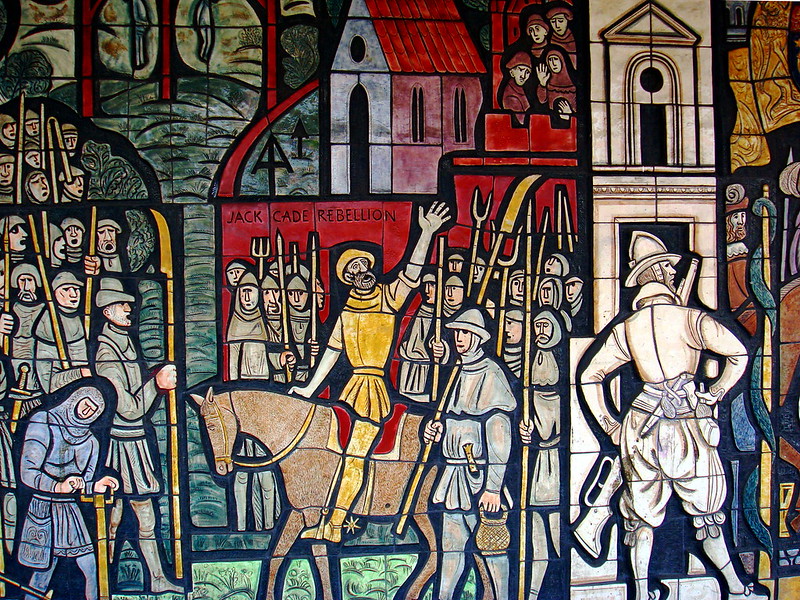 Jack Cade’s entrance into London
Jack Cade’s entrance into LondonThis common body,
Like to a vagabond flag upon the stream,
Goes to and back, lackeying the varying tide.
To rot itself with motion.
In scene after scene of Henry VI, part 2, beginning with the opening scene, the audience is led to an initial enthusiasm for what they will come to despise as the scene progresses. Throughout the play, characters who repel the audience gain sympathy (proud Eleanor, Duchess of Gloucester, for example), and characters who the audience at first laughs with in solidarity grow gross and terrifying to the those watching (the rebellious Jack Cade, for example).The dramatic action of the play in performance is made up of the changes in the audience’s understanding and reactions to what happens on the stage.
The moral ambiguity of the audience’s reactions parallels the moral ambiguity of the onstage characters and historical events. Though Shakespeare’s history plays descend in form from the Medieval theater, the history plays presume a doubtful somewhat cynical and rowdy audience rather than an audience united by Faith in God and obedience to the Church.

Printed in 1594, titled The first part of the Contention of the Two Famous Houses of Yorke and Lancaster, with the death of the good Duke Humfrey.
WEEK FIVE : THEATER AS PROPAGANDA
Our Town by Thornton Wilder (1938)
Waiting for Lefty by Clifford Odets (1935)
Power by Arthur Arent (1938)
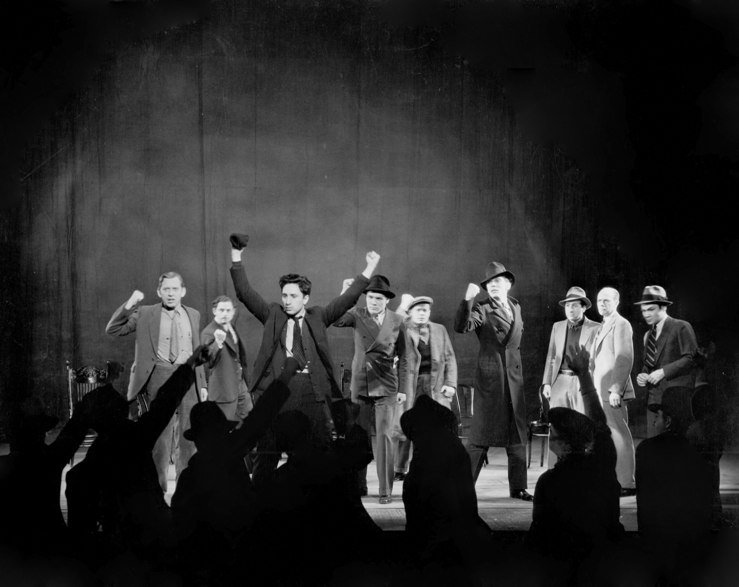
Waiting for Lefty (photo from the original 1935 Broadway production)
Agitprop theater meant to agitate its audience by inciting anger at oppression and then, sharing a belief in the necessity of social revolution, inciting political action. The word propaganda was taken from the Catholic Church where it had been used since 1622 to refer to whatever materials, from pictures to pamphlets, missionaries used to propagate the faith. Propaganda, in its original form, was meant to propagate Christianity like a crop of corn to non-Catholic countries. Agitprop theater was by design meant to inspire and was easy to understand with easily identifiable characters (Lefty, the Fatt man), and like the plays of the Middle Ages in Europe, the structure of the performances was episodic, so that audiences who saw even only a part could understand something, even if they missed the whole.
In 1935 the President of the United States, Franklin Delano Roosevelt established the Works Progress Administration—renamed in 1939 the Works Program Administration. It was and is invariably referred to by its initials as the WPA. The WPA hired people for public work: building roads, train stations, and post offices. Art—and theater especially—was considered public work, and under the Federal Theater Project, the WPA hired actors, designers, directors and other theater artists. From 1935 to 1939 Hallie Flanagan staged almost 1,000 plays in 50,000 performances produced by 12,000 actors, directors, and stagehands in 40 theaters in 20 states to an audience of 25 million Americans.
This was a truly national theater. Regional units originated productions in New Orleans, Oklahoma City, Detroit, and Tacoma, Washington, among other cities, breaking up the cultural dominance of New York and the Eastern seaboard states where New York-bound shows previewed. Black Americans were provided resources to create theater, there were puppet troupes, and troupes performed in original plays in immigrant languages. The Federal Theater Project (FTP) presented innovative director’s versions of Shakespeare, Aristophanes, and the Living Newspaper—a form of theater Flanagan learned about in Russia—which dramatized the events of the day and was unafraid to assign complicity, if not blame, for joblessness and hunger, to powerful forces in America, including bankers and newspaper owners. That is to say, the Living Newspaper was agitprop which would become an even more damning label than melodrama in the vocabulary of American theater criticism.
Our Town, written by Thornton Wilder in 1938, defines American identity as much, if not more, than any agitprop theater, and with even bolder and obvious theatricality. They play won Wilder a second Pulitzer. It begins disarmingly. A narrator saunters onto a bare stage with a script in his hand. He identifies himself as the Stage Manager. Scenery is assembled and taken apart onstage. A boy meets girl story is told and ends in a cemetery, the graves represented by chairs. Wilder reassures an audience that a cycle of life to birth familiar to small town Americans will thrive, no matter what the passing sorrows of economics or personal life. Our Town does not share the Federal Theater Project’s critique of American values. It can be thought of as soft agitprop, advocating for acceptance that the status quo is as natural as the stars in the sky or the New Hampshire mountains.
Wilder’s theater practices parallel traditional Chinese theater—bare stage, symbolic scenery, the narrating stage manager, but for all his overt theatricality, Wilder remained silent about his personal life.
“Our Town—a New Hampshire village explored by the techniques of Chinese Drama ” – A letter from Paris by Thornton Wilder, November 24, 1937
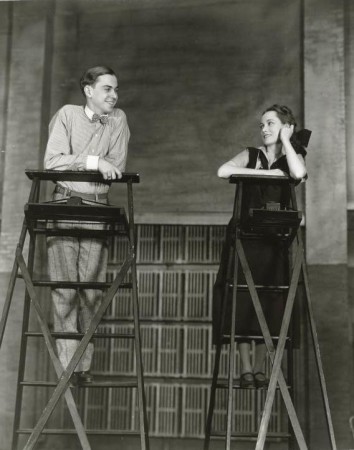
Our Town (John Craven and Martha Scott, (photo from the original Broadway production, 1938)
STAGE MANAGER: I think this is a good time to tell you that the Cartwright interests have just begun building a new bank in Grover’s Corners—had to go to Vermont for the marble, sorry to say. And they’ve asked a friend of mine what they should put in the cornerstone for people to dig up … a thousand years from now…. Of course, they’ve put in a copy of the New York Times and a copy of Mr. Webb’s Sentinel. … We’re kind of interested in this because some scientific fellas have found a way of painting all that reading matter with a glue—a silicate glue—that’ll make it keep a thousand—two thousand years.
We’re putting in a Bible … and the Constitution of the United States—and a copy of William Shakespeare’s plays. What do you say, folks? What do you think?
Y’know—Babylon once had two million people in it, and all we know about ’em is the names of the kings and some copies of wheat contracts … and contracts for the sale of slaves. Yet every night all those families sat down to supper, and the father came home from his work, and the smoke went up the chimney,—same as here. And even in Greece and Rome, all we know about the real life of the people is what we can piece together out of the joking poems and the comedies they wrote for the theater back then.
So I’m going to have a copy of this play put in the cornerstone and the people a thousand years from now’ll know a few simple facts about us—more than the Treaty of Versailles and the Lindbergh flight.
See what I mean?
So—people a thousand years from now—this is the way we were in the provinces north of New York at the beginning of the twentieth century.—This is the way we were: in our growing up and in our marrying and in our living and in our dying.
[A choir partially concealed in the orchestra pit has begun singing “Blessed Be the Tie That Binds.”]**************************************
OT: Our Town is a 2002 documentary film directed by Scott Hamilton Kennedy. It is set at Dominguez High School in Compton, California. The school has not produced a play in twenty years and has no budget, nor a stage.
https://youtu.be/89cfwj24sZY
WEEK SIX: THEATER OF INTERIOR DRAMA – AND A TRAINED AUDIENCE
A Month in the Country by Turgenev /
Endgame by Samuel Beckett
Happy Days by Samuel Beckett
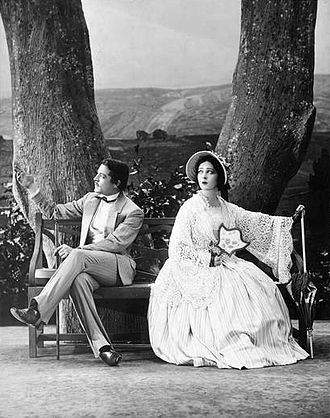 Elliot Cabot as Rakitin, Alla Nazimova as Natalya Petrovna, NYC 1930
Elliot Cabot as Rakitin, Alla Nazimova as Natalya Petrovna, NYC 1930
The plot of Ivan Turgenev’s A Month in the Country, written in 1848, revolves around an elegant twenty-nine-year-old married woman, Natalya Petrovna, who falls in love with her son’s twenty-one-year-old tutor. Then Natalya Petrovna learns that Vera, the teenage girl who is her ward, has fallen in love with the same young man. When A Month in the Country was first staged in 1872 in St. Petersburg, twenty-two years after it was written, the production failed. Turgenev was not surprised. He never expected the words of his play to be spoken in a theater. More novelist than playwright, Turgenev doubted it was possible to depict the intricacies of psychological action outside of fiction and believed his text would be most effective read silently at home.
Seven years later, Maria Gavrilovna Savina, a thirty-year-old actress, approached Turgenev for permission to stage a new production. It was her wish to play the sixteen-year-old ward, Vera. Turgenev warned the actress that it was impossible, not because she couldn’t pass for a teenager, but because, in his opinion and based on its only performance, the play wasn’t any good as a play. Savina insisted and she was charming. Turgenev was seventy and he gave in. When he came to Savina’s premiere, Turgenev prepared for public disgrace. He sat at the performance hidden behind a curtain in a side box. Applause at the play’s conclusion and calls for the author forced him out.
A Month in the Country still includes monologues where characters, as in Hamlet, say aloud what they are thinking. The married woman in love with the tutor also has a lover (it’s complicated). His name is Rakitin. He sits on a bench to muse:
Ah, how absurd a man is who has only one idea in his head, one object, one I have never deceived myself, I know very well how she loves me; but I hoped that with time that quiet feeling…I hoped? Have I the right to hope, dare I hope? I confess my position is pretty absurd…almost contemptible… [A pause.] What’s the use of talking like that?
[A Month in the Country, Act 2, translated by Constance Garnett ]
The actor in the role of Rakitin might be pretending to talk to himself, and this can be played that Rakitin talks to himself to screw up his courage or talks to himself to figure out how to stop doing what he’s doing. It can also be played as a direct chat with the audience, but in any interpretation, it relies on the actor explaining himself. In a scene where the tutor asks Vera to help tie a tail to his kite, there are no such monologues or explanations. The audience is asked to watch and deduce what’s going on by observing behavior, often very small and subtle. At Savina’s 1872 revival of the play, the Russian audience was laughing, and crying, prepared to react to the play , in part, by their experience with, of all things, what were then modern Russian paintings.
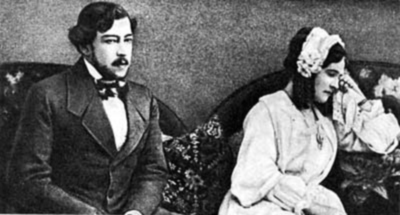 Stanislavsky as Rakitin, Olga Knipper as Natalya Petrovna, Moscow 1909
Stanislavsky as Rakitin, Olga Knipper as Natalya Petrovna, Moscow 1909
In 1908, the actress Olga Knipper (who was Chekhov’s widow) fled a Moscow Art Theater rehearsal in tears. Knipper was preparing the central role in a revival of A Month in the Country. Stanislavsky was directing her (and playing Rakitin) was eager for the challenge of dramatizing the interior lives of onstage characters and looked forward to the play’s inaction, the better to display, as he put it, “a lacework” of psychology.
The rehearsals of A Month in the Country provided Stanislavsky with his first opportunity to put his system into practical use while directing and acting in a play. The work the company had done staging Chekhov’s plays gave them the understanding and craft to approach Turgenev’s A Month in the Country.
That nothing happens, that communication fails, could now be made as thrilling to an audience as melodrama. The actor’s use of what is called “playing the obstacle” could achieve a communion of emotions shared by the actors and the audience.
Samuel Beckett (1906–1989) also wrote plays for which it can be said that nothing happens is what happens. As in plays by Chekhov or Turgenev, the interior life of the characters is where to look for the dramatic action of Beckett’s plays —especially habits enacted in ceremonies of faith and inertia.

Randy Harrison as Nagg, Tanya Dougherty as Nell in Beckett’s Endgame, Stockton MA 2010

WEEK SEVEN: THEATER OF CLICHES
(MOCKING THE FORMULAS OF PATRIARCHY)
A Funny-Thing-Happened-on-the-Way-to-the-Forum
Plautus (c. 254 BCE–184 BCE
The cultural prestige of Roman theater—plays written in Latin for audiences who spoke Latin—lay like a heavy weight for centuries in the scales of critics estimating the value of plays written in Elizabeth Tudor’s England, Louis XIV’s France, the Italian city-states of the Renaissance, and the Greek city-states. The artistic power of Roman theater was conflated with the greatness of Roman political power. Roman political power is and was dazzling. Rome began as a small town in the south of Italy, grew to rule a kingdom, then turned into the center of a republic ruled over by a senate, until ruled by an emperor, the city became the center of an empire that included what would become England, France, Italy, Germany—and included what had been all the city states of Greece. Classical Athens at the time of Sophocles is estimated to have had 60,000 freeborn citizens (that is to say, free-born males); Rome, as a city, is estimated to have had a population of 1,250,000. Rome as an empire, which included what are now Germany, North Africa, Spain, and Turkey, held a population of 45 million at the lowest estimate.
Even after Germanic tribes disrupted Roman domination of the Western world in 476 AD (a date now known as the fall of the Empire), Roman culture held vast influence for at least another thousand years because Latin, the language of the Empire, was the language of the Church, an empire unto itself.
Plautus is one of the greatest playwrights ever, a writer whose work has outlived the world for which it was intended. The theatrical situations Plautus devised are still in use in television and movies as well as onstage.
We don’t know much about the life of Plautus, and that’s fine. He supported himself. He wrote over fifty plays, maybe. We have twenty intact. He wrote wild comedies stuffed with rude language, many puns, and complicated plots explained to the audience at the beginning of the play. The plots are taken from the Greeks, the plays are set in Greece, but it was understood that Rome is implied. He wrote during Punic Wars, a great war between Rome and Carthage, but you wouldn’t know much about it from the plays. Often the plots rely on mistaken identities (with twins, sometimes). The wordplay is memorable and often difficult to translate: puns, riddles, slips of the tongue, and double entendres. There are fart jokes in plays by Plautus. The names of the characters are funny and revealing: Philocomasium is “a girl who loves a party” and it’s good that she does—she’s a prostitute.
What makes Plautus funny, then and now, is his explosive relationship to the ideals of his culture, a culture that was, we would say, high-minded and paternal. The Romans idealized the family led by the wise father always looking after his flock, the kind supportive mother, the well-behaved son, the virginal daughter, and the loyal servant. These are all cultural types endlessly propagandized by the powers of the country, and as with orthodoxies of all sorts, just waiting to be exploded onstage with ridicule. In plays by Plautus (and all his followers since) the father is a letch, the mother is a big-nosed shrew, the daughter is dumb as a bag of hair, and if she’s a virgin it’s not by choice, the son is a ne’er do well, the faithful servant is a conniver, soldiers are braggarts, teachers are fools, and the only commonsense belongs to slaves—more on that later. This comedy is different than the humor of Aristophanes where the ridicule is personal. Aristophanes is making fun of Socrates and Euripides—not playwrights in general—and particular generals or politicians, not a fictional soldier. Plautus is making fun of types: windbag teachers and hen-pecked Roman husbands, types that endure beyond specifics: the plays and their characters are recognizable and enjoyable thousands of years later, if not word for word, then in situation, type, and plot.
The relationship of father to son is at the heart of the comedies written by Plautus. The root of such a relationship might derive from Menander, but it’s a root that sprouted leaves and flowers for Plautus because the father/son relationship was the basis of relationships in Rome: the paternal concern for the citizens from the Senate, the paternal concern of Rome for its colonies, and the paternal concern of men over women. Father/son as subject matter is safely apolitical too—and as long as there are fathers and sons, it’s something an audience can relate to.
It’s easier today to talk about Plautus in performance by referring to the ways his work survives onstage in plays by Molière and Shakespeare where the conventions of twins, braggart soldiers, and foolish fathers flourished. Studying comedy, especially the writing of someone like Plautus, without seeing the plays in performance is like studying a bicycle without ever seeing one being ridden, much less riding one yourself.
Though no one these days shares the living Latin language of 190 BC, there is a way in English to share something of the fun that Plautus offered his ancient audience. In 1962 two Americans, Larry Gelbart and Burt Shevelove, compiled several plays by Plautus to create the book for a musical comedy called A Funny Thing Happened on the Way to the Forum. Buffoonish humor, flashy showgirls, and the especially witty song lyrics by Stephen Sondheim bring the spirit of the plays written by Plautus to life onstage. The formulas of the Roman comedy fit the formulas of the musical comedy well: a virgin sings, “Lovely. All I am is lovely, lovely is the one thing I do”; a braggart soldier (named Miles Gloriosus after the play by Plautus) foils a young lovers’plans. Pseudolos, a slave who longs to be free, is at the heart of A Funny Thing Happened on the Way to the Forum. In talking about the show, co-author Burt Shevelove made the point that this plotline of longing for freedom was further emphasized than in the Latin plays, “In writing the book, we selected the characters from Plautus’ plays and created a plot. The only thing extremely un-Roman was making a big thing out of the slave wanting to be free. Although slaves in Roman comedies wanted to be free, it was a very casual thing.”
Interestingly, the collaborators back-ended into a Plautus device: a prologue told by the slave. When Jerome Robbins, who had turned down the offer to direct the show, came to see an out of town preview, he advised the creative team that the audience was confused by and didn’t understand what they were about to see. Stephen Sondheim worked over a weekend to create an opening number, which includes these lines:
Nothing with kings, nothing with crowns;
Bring on the lovers, liars, and clowns!
Old situations, new complications,
Nothing portentous or polite;
Tragedy tomorrow! Comedy tonight!
And if you can memorize that and sing it you will have the basics of Plautus, who wrote his words to be performed.
WEEK EIGHT: THEATER OF SENSATION
(IN AN ERA OF DEADENED SENSIBILITY)
Sweeney Todd by Stephen Sondheim and Hugh Wheeler
Seneca (c. 4 BCE–65 AD)
“I think of Sweeney Todd as a person so passionate on one subject that he has no energy for anything else. He is hot after one goal, becomes sidetracked because of circumstances, and goes crazy until suddenly another lucky chance happens and he is able to proceed along his path, destroying everything along the way. He is a man interested in only one thing, and he is animated only when he is in active pursuit of that goal. All the characters in the play are boxed in; they have one thing they want. That is characteristic of both melodrama and farce: the characters can be outlined by the one thing they want. In A Funny Thing Happened on the Way to the Forum, Pseudolus wants his freedom, the hero wants the girl, the old man wants the young girl, the wife wants the husband, the pimp wants money, the old man wants his children: everyone is motivated entirely by one want. The same thing is true in Sweeney Todd. Everybody is obsessed by one thing: the Judge with his lechery, the Beadle with his authority, Mrs. Lovett with her greed, Sweeney with his revenge, the boy Tobias with a home, and the lovers with each other. Everybody wants one thing, they all clash, and there is a terrible collision. When the refuse clears, only two of them are left alive—the lovers. That’s part of the tradition of popular melodrama. The show must have some feeling of traditional form. You might argue that it would be more realistic to have the girl killed off, but the audience wouldn’t be as satisfied and they certainly wouldn’t feel for Sweeney. The ending should be formally satisfying.”
Excerpted from extemporaneous remarks made by Stephen Sondheim to, and recorded by, Daniel Gerould on September 5, 1979
In the cities large and small, Industrial Age factory workers and others who lived emotionally restricted lives, found themselves stimulated in the theater. Something similar happened in twentieth century Soviet Russia and other communist countries where popular theater offered escape from dreary, soul-numbing daily life and State-stifled expression. In nineteenth century Europe, melodramas placed characters who might have come right up out of the audience—shop girls, factory workers, sailors—in heightened emotional situations. Female characters in the popular theater forms of the nineteenth century, especially melodrama, suffered publicly, displaying emotions hidden by women in polite society.
Melodrama’s plots were satisfyingly predictable: the villain threatened the good guys, the villain lost, or if the heroes lost, they would be vindicated by going to heaven. Suspense and stage spectacle kept the audience’s interest. That the experience followed a formula was comforting. There was nothing like Ibsen’s subversion of expectations. Just as Renaissance theater which was paid for by kings flattered kings, the popular theater paid for by the general public offered the general public a vision of itself as heroic. Otherness was safely exotic, enticing, and laughably funny.
In an increasingly industrialized nineteenth century America, tours by train or horse-pulled coaches rolled theater productions out of the cities and into mining camps or wherever hall could be found or a tent set up for the occasion. Better lighting in American cities, at first gas lamps on the streets, ultimately electric streetlamps, meant middle-class audiences felt safer going out at night. Tickets were priced to be available to a wider range of ticket buyers than ever before. To maintain financial support from as broad a base as possible, theater buildings in America were large. Performers necessarily used loud voices and large gestures in order to be seen and heard. As technology advanced, flaming gas jets lit up the stage much more brightly than candles had done before. Brighter lighting meant there could be larger audiences. Gaslight provided more lurid colors and shed more intense shadows, accentuating the lurid style of acting. Even so, subtle acting was praised; psychological nuance was possible within the context of the clichéd roles.
***************
Seneca (c. 4 BCE–65 AD) —his full name was Lucius Annaeus Seneca—was born in what’s now Cordoba in Spain, which was part of the Roman Empire, too. He came from a wealthy family. His father had been a famous orator in Rome, and his mother was unusually well-educated. He went to Rome as a child to study, after a time he lived as a child in Egypt, which was also part of the Empire. Seneca was famous even as a young man for his speaking ability. He was involved in politics, and was in and out of favor until he was brought back to Rome in 49 AD to tutor Nero. Be careful whom you teach; later, when Nero was emperor, he ordered his former teacher to commit suicide.
Seneca was most famous as a philosopher, a Stoic, and he taught that one met pain with dignity. Supposedly he met death with dignity, but meeting death with dignity is not clearly reflected in his tragedies, and it is hard to define his plays as aspects of his philosophy, though that hasn’t stopped people from trying. All the same stories told better onstage by the Greeks are re-hashed by Seneca for stage readings, among the plays: Medea, Phaedra (from Hippolytus), Agamemnon, and Oedipus. His tedious moralizing was quite popular with the powers in Rome and later with other would-be empires, so Seneca was studied, copied, and his influence as a playwright grew well beyond the merits of his plays.
We have a record of Seneca’s Oedipus being performed in England in Latin by university students in Cambridge as early as the 1550s. The first translation into English of Seneca’s plays was done in 1581 by Alexander Neville in His Tenne Tragedies. Neville was sixteen at the time. We now consider two of the ten translations outright fakes. Seneca’s writings were known to English playwrights Shakespeare, Marlowe, and Ben Jonson among others, who were searching for models with which to write plays and borrowed techniques and the structure of five acts, among other things. The earlier English playwrights hadn’t bothered with such study.
Neville’s introduction to the 1581 Oedipus includes the unintentionally hilarious: “mark thou…what is meant by the whole course of the History: and frame thy lyfe free from such mischiefes.” What this could mean is curious: don’t kill your father unintentionally and marry your mother by mistake? And reading Seneca’s play will convince you not to gouge out your eyes or hang yourself? Because otherwise you might? It’s more likely this nonsense is a formula stuck in front of the plays as means to get them past the censor. For years the Church had been attacking theater, and it was precisely those badly behaved people in the Roman comedies that they were thinking about. But here, in a tragedy from a Stoic philosopher, the theater could claim protection because what the plays were displaying was “educational,” and Stoicism was pagan but passable because it was in some way Christ-like to suffer. Make no mistake, what the audience enjoyed (and the authors, too, including, Shakespeare) were Seneca’s cut-out tongues, his ravished virgins, the heaps of bodies onstage, the gushing blood, the ghosts, the witches, the children baked in a pie and eaten, and the ripped open womb (Seneca’s thoughtful addition to Oedipus).
Removed from the apparatus of their propaganda, Seneca’s plays have something to say to us today because they are texts that resonate beyond their author’s intention and their own culture’s understanding. They’re artifacts, and they tell us something important about Roman culture because there were no other great playwrights from Rome besides Plautus, Terence, and Seneca, that we know of, even by reputation.
If Plautus lives today in sitcoms, and he does, Seneca lives too. There is a universal human urge to watch violence and cruelty—at a distance. In ancient Rome the Coliseum provided real distance with the vast spaces of the arena. As Seneca intended, violence read aloud gains distance by taking place in the imagination. In the tradition of Elizabethan translator Alexander Neville passing off horror as moral education, today we slip horror into news, into crime shows, into violent newspaper headlines, and into slasher movies. In our time, the distance between violence and spectator is achieved by laughter.
